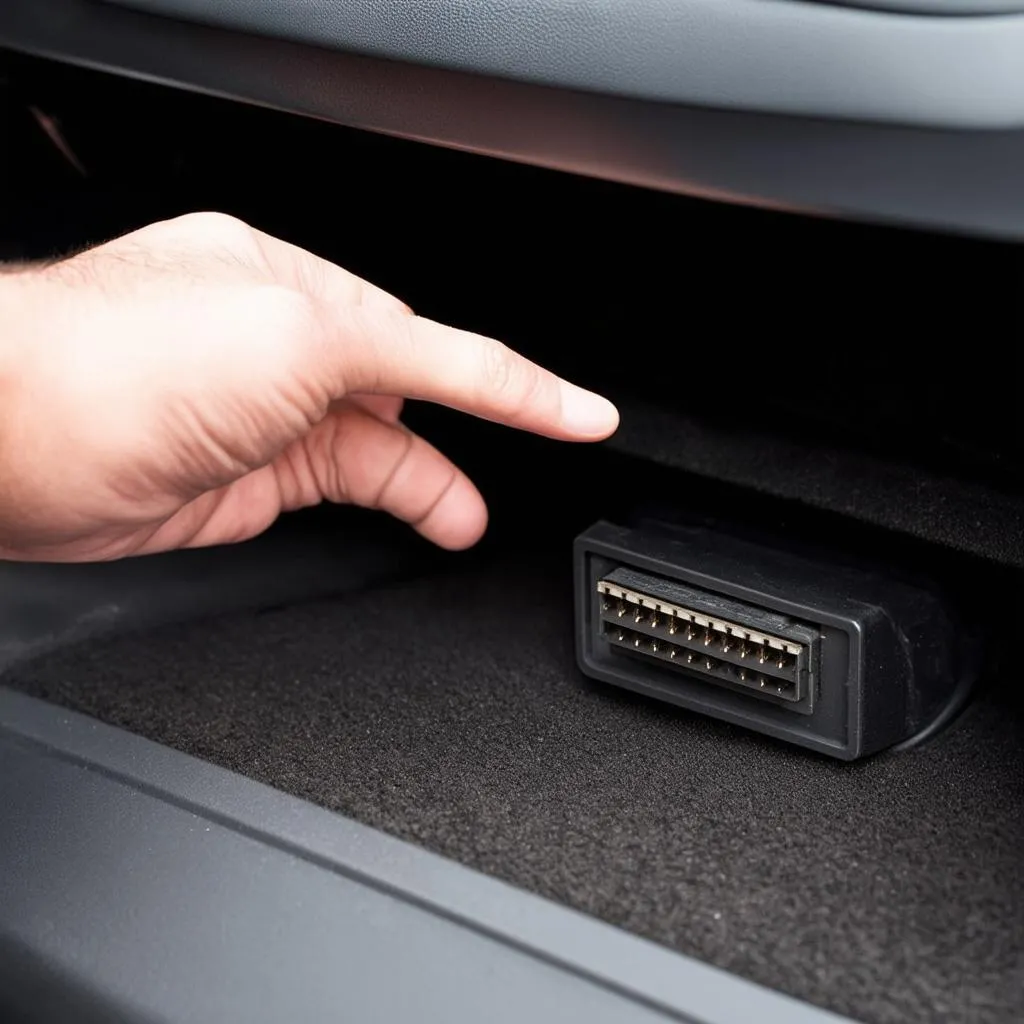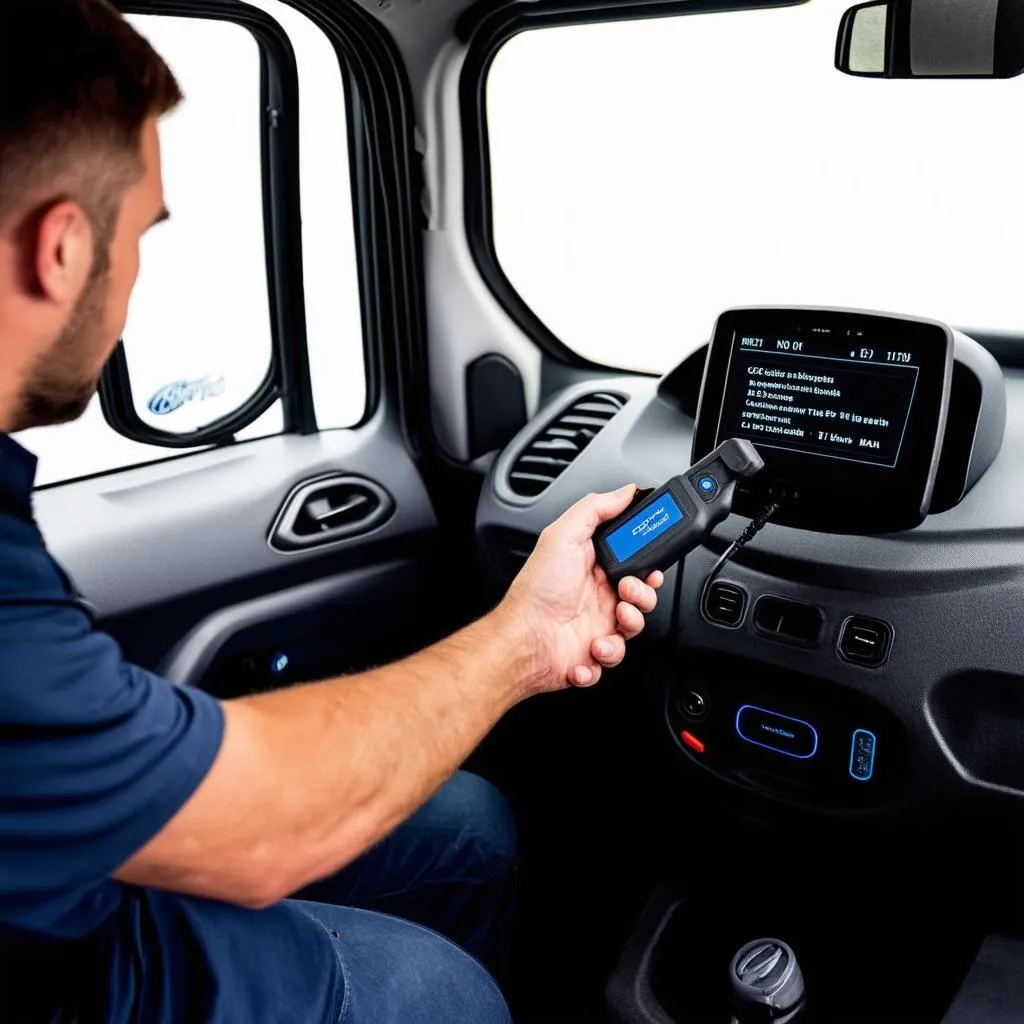“Where’s the darn OBD port on this thing?” If you’ve ever uttered those words while scratching your head in front of your Ford Transit Connect, you’re not alone. Finding the OBD port, especially on European vehicles, can feel like a treasure hunt. But fear not, fellow Transit Connect owner, for this guide will illuminate the path to your OBD port and beyond!
Decoding the Mystery: What is an OBD Port?
Before we embark on our quest, let’s clarify what we’re searching for. The OBD port, or On-Board Diagnostics port, is the gateway to your Transit Connect’s inner workings. It’s a standardized 16-pin connector used to access your van’s computer system and retrieve valuable diagnostic information. Think of it as a direct line of communication with your vehicle’s electronic brain.
“Knowing the location of your OBD port is essential for DIY maintenance and troubleshooting,” says Alex Thompson, a seasoned automotive electrician with over 20 years of experience. “It allows you to read and clear fault codes, monitor live data, and even program certain modules.”
Unveiling the Location: Where is the OBD Port on a Ford Transit Connect?
Now, let’s pinpoint that elusive OBD port. In most Ford Transit Connect models, the OBD port is conveniently located beneath the steering column, near the driver’s side footwell. It’s usually tucked away behind a small, removable panel.
Imagine yourself settling into the driver’s seat of your Transit Connect. As you reach for the steering wheel, look down and to the right. You’ll likely find a small panel, often made of plastic. Gently pry open this panel (it might require a little pressure), and voila! You’ve discovered the hidden gem – your OBD port.
 Ford Transit Connect OBD Port
Ford Transit Connect OBD Port
But wait, there’s more! While the aforementioned location is the most common, the exact position might vary slightly depending on the model year and trim level of your Transit Connect. If you’re having trouble finding it, consult your owner’s manual or refer to online resources specific to your vehicle’s year and model.
Beyond the Port: What Can You Do With It?
Once you’ve located your OBD port, a world of possibilities opens up! You can connect various diagnostic tools, such as:
- Code Readers: These handy devices allow you to read and clear diagnostic trouble codes (DTCs), providing insights into potential issues with your Transit Connect.
- Scan Tools: Offering more advanced functionalities than code readers, scan tools enable you to view live data streams, perform active tests, and even program certain modules.
- Smartphone Apps: Yes, even your smartphone can become a powerful diagnostic tool with the right app and a Bluetooth OBD adapter.
 OBD Scanner in Use
OBD Scanner in Use
A Word on Feng Shui and the OBD Port
While the OBD port itself doesn’t hold any inherent significance in Feng Shui, ensuring your vehicle is well-maintained aligns with the principles of harmony and balance. A smoothly running Transit Connect reflects a well-balanced life, allowing you to navigate your journey with ease and efficiency.
Still Stumped? We’re Here to Help!
Finding and utilizing your OBD port can empower you to take control of your Transit Connect’s maintenance and troubleshooting. However, we understand that dealing with car electronics can be daunting. If you’re unsure about anything, don’t hesitate to reach out to our team of automotive experts for assistance.
Need help with diagnostics tools, software installations, or any other automotive concerns? Contact us via Whatsapp at +84767531508. Our team is available 24/7 to provide guidance and support.
Looking for more helpful guides and information? Check out these related articles:
Happy troubleshooting, and may your Transit Connect journeys be smooth and enjoyable!